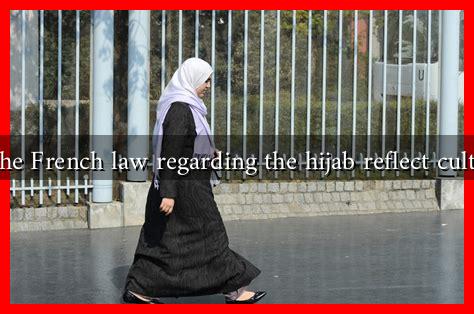-
Table of Contents
How Does the French Law Regarding the Hijab Reflect Cultural Values?
The hijab, a traditional headscarf worn by many Muslim women, has become a focal point of cultural and legal debates in France. The French law regarding the hijab is not merely a legal stipulation; it is a reflection of the country’s cultural values, secularism, and the ongoing struggle to balance individual freedoms with societal norms. This article delves into the implications of the hijab law in France, exploring its cultural significance and the broader societal context.
The French Law on Religious Symbols
In 2004, France enacted a law prohibiting the wearing of conspicuous religious symbols in public schools. This law specifically targeted items such as the hijab, large crosses, and yarmulkes. The rationale behind this legislation is rooted in the French principle of laïcité, or secularism, which aims to maintain a clear separation between religion and state affairs.
- Secularism as a Cultural Value: Laïcité is a cornerstone of French identity, reflecting the country’s historical struggle against religious influence in governance. The law is seen as a means to promote equality and prevent religious symbols from overshadowing the public sphere.
- Gender Equality: Proponents of the hijab ban argue that it promotes gender equality by liberating women from what they perceive as oppressive religious practices. Critics, however, contend that it infringes on women’s rights to express their identity.
Public Perception and Cultural Tensions
The hijab law has sparked significant public debate and cultural tensions within France. Many view the law as a necessary measure to uphold secularism, while others see it as an infringement on personal freedoms. This dichotomy reflects broader societal attitudes towards Islam and multiculturalism in France.
- Support for the Law: Surveys indicate that a substantial portion of the French population supports the hijab ban, viewing it as a safeguard against religious extremism. For instance, a 2019 poll revealed that approximately 60% of respondents believed that the hijab should not be worn in public spaces.
- Opposition to the Law: Conversely, many Muslim women and human rights advocates argue that the law discriminates against them. They assert that the hijab is a personal choice and an expression of their faith, not a symbol of oppression.
Case Studies: Impact on Muslim Women
The impact of the hijab law on Muslim women in France is profound and multifaceted. Many women have reported feeling marginalized and stigmatized due to their choice to wear the hijab.
- Educational Barriers: The law has led to instances where young Muslim girls are expelled from schools for wearing the hijab, limiting their educational opportunities and reinforcing social exclusion.
- Employment Challenges: Muslim women who wear the hijab often face discrimination in the job market. A study by the French Institute of Public Opinion found that candidates with a hijab were 30% less likely to be called for an interview compared to those without.
International Perspectives and Comparisons
France’s approach to the hijab is not unique; other countries grapple with similar issues regarding religious symbols and cultural identity. For instance, countries like Turkey and Belgium have also implemented restrictions on the hijab in public institutions. However, the motivations and cultural contexts differ significantly.
- Turkey: The ban on the hijab in public institutions was lifted in 2013, reflecting a shift towards greater religious freedom.
- Belgium: In 2011, Belgium banned the full-face veil in public spaces, citing security concerns and social cohesion.
Conclusion: A Reflection of Cultural Values
The French law regarding the hijab is a complex interplay of cultural values, secularism, and individual rights. While it aims to uphold the principles of laïcité and promote gender equality, it also raises critical questions about freedom of expression and the rights of minority communities. As France continues to navigate these challenges, the hijab remains a potent symbol of the broader cultural tensions that define contemporary French society.
In summary, the hijab law reflects France’s commitment to secularism and its historical context, but it also highlights the ongoing struggle for inclusivity and respect for individual choices. Understanding these dynamics is essential for fostering dialogue and promoting a more harmonious society.
For further reading on this topic, you can explore resources from the Human Rights Watch.


